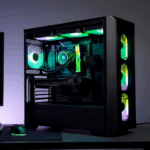“`html
Deep Dive into Neural Networks: Understanding the Mechanics of Deep Learning
Introduction
Neural networks and deep learning have revolutionized the field of artificial intelligence, enabling machines to perform complex tasks with unprecedented accuracy. These technologies underpin many modern advancements, from voice recognition to self-driving cars. Understanding neural networks and deep learning is crucial as they continue to shape our technological landscape.
Basics of Neural Networks
A neural network is a computational model inspired by the human brain’s biological neural networks. It consists of interconnected nodes, or neurons, organized into layers. The basic components include:
- Nodes: Represent individual neurons that process input data.
- Layers: Comprise multiple nodes and can be input, hidden, or output layers.
- Weigths: Determine the strength of connections between nodes.
- Bias: Allows the model to fit more accurately to the data.
Data flows through the network, transforming inputs into outputs via these layers. Each node processes data, passing it along to the next layer until the final output is produced.
Types of Neural Networks
Several types of neural networks exist, each suited to different tasks:
- Feedforward Neural Networks: Process data in one direction without loops. Used in pattern recognition and classification.
- Recurrent Neural Networks (RNN): Handle sequential data by maintaining a memory of previous inputs. Common in natural language processing.
- Convolutional Neural Networks (CNN): Specialized for image and video data, using filters to detect patterns.
Activation Functions
Activation functions introduce non-linearity into the network, allowing it to learn complex patterns. Common functions include:
- Sigmoid: Outputs values between 0 and 1, useful for binary classification.
- ReLU (Rectified Linear Unit): Outputs zero for negative inputs and the input value otherwise, computationally efficient.
- Tanh: Outputs values between -1 and 1, providing better convergence than sigmoid.
Training Neural Networks
The training process involves two main steps: forward propagation and backpropagation.
- Forward Propagation: Input data passes through the network, producing an output.
- Backpropagation: Adjusts weights and biases based on the difference between predicted and actual outputs.
- Loss Function: Measures prediction error, guiding the optimization process.
- Optimization Algorithms: Such as gradient descent and its variants (e.g., Adam, RMSprop) minimize the loss function.
Deep Learning Architectures
Popular architectures include:
- CNNs: Effective for image and video processing, leveraging convolutional layers to extract features.
- RNNs: Ideal for sequence prediction tasks, such as speech recognition and time-series analysis.
These architectures are optimized for specific tasks, enhancing performance and efficiency.
Applications of Deep Learning
Deep learning finds applications across various industries:
- Healthcare: Medical imaging, disease diagnosis, personalized treatment plans.
- Finance: Fraud detection, algorithmic trading, risk assessment.
- Autonomous Vehicles: Object detection, path planning, decision-making.
Real-world examples illustrate the transformative impact of deep learning.
Challenges and Future Directions
Current challenges include:
- Overfitting: Models performing well on training data but poorly on unseen data.
- Interpretability: Difficulty in understanding model decisions.
Future directions may involve advancements in explainable AI, improved model robustness, and broader accessibility.
Conclusion
Neural networks and deep learning are foundational to modern AI, offering powerful tools for solving complex problems. By understanding their mechanics, we can harness their potential to drive innovation and solve real-world challenges.
“`


